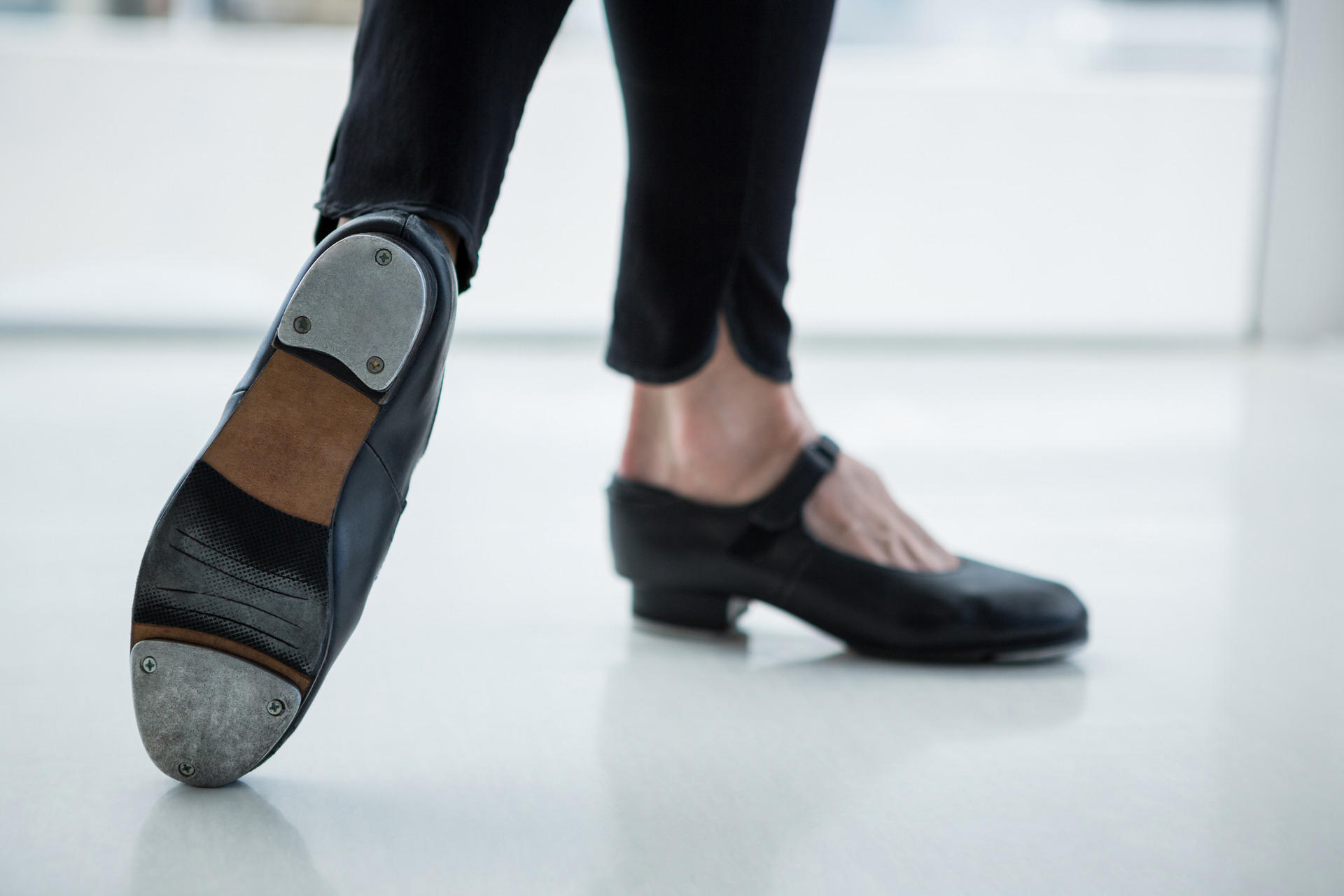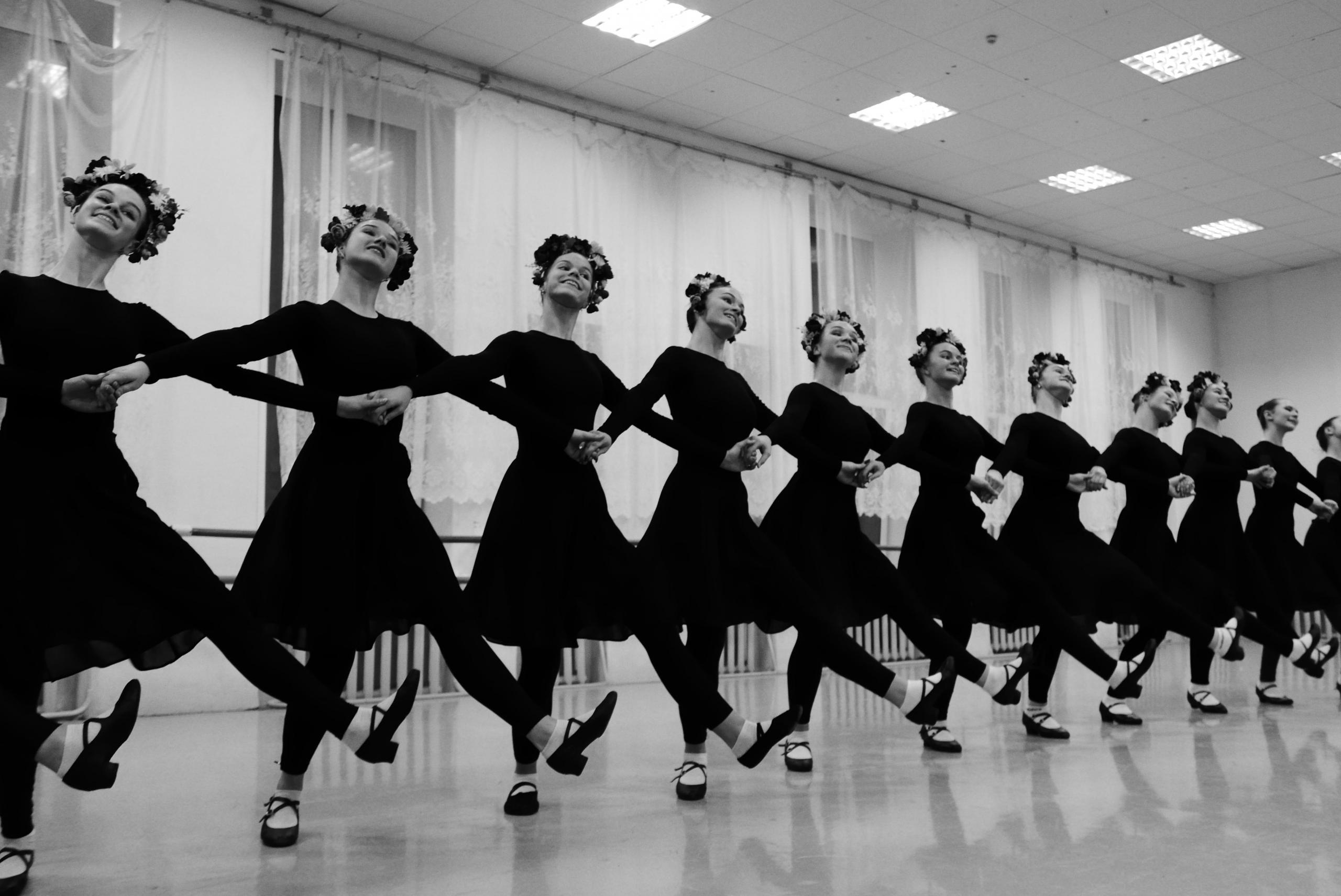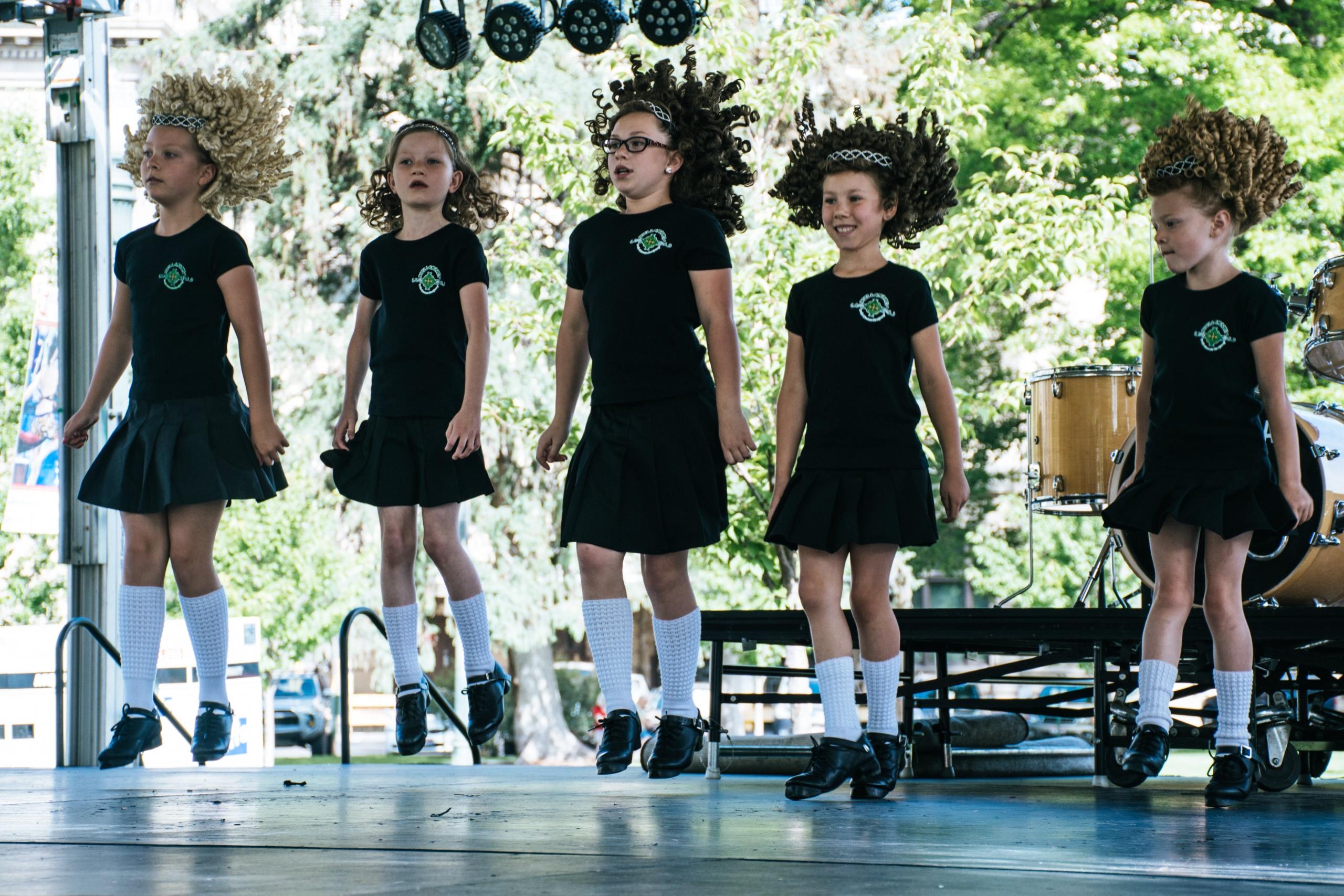Tap dancing is a captivating dance style known for its rhythmic beats and complex footwork. It has been popular for a very long time, entertaining audiences for centuries. Whether you love the old Hollywood classics or the energetic modern performances, tap dance is a special way to explore rhythm and expressiveness through movement.
This guide aims to simplify the basics of tap dancing for beginners, providing tools and techniques to master the steps of tap dance.
Explore the diverse world of tap dance styles, from Broadway tap classics to contemporary innovations. Discover valuable tips and guidance to become a true master of tap. Join us on a rhythmic adventure, embracing music and letting the dance floor come alive beneath your feet.

What is Tap Dance?
Tap dance is an exciting type of dance with the main focus on making rhythmic sounds with your feet. Dancers wear special soft shoes with metal tips on the toes and heels. When they step on the floor, these metal parts make unique noises. It's like using your feet as musical instruments.

Tap dance is special because it combines what you hear with what you see, making it an interesting performance for the dancers and the audience.
It started in the United States long ago and gained popularity in the 1920s and 1930s, becoming an integral part of American dance culture.
What is the History of Tap Dance?
The tap dancing history is a complex tapestry influenced by African, Irish, and English dance traditions. Although the term ‘tap’ came to use around 1902, tap dance itself was popularized in the mid-19th century in the United States, combining rhythmic elements and footwork from enslaved Africans and Irish and English immigrants. It flourished in urban centers like New York City, and minstrel shows and vaudeville theaters allowed dancers to showcase their skills. The 1920s and 1930s saw a golden age with legendary figures.
In the mid-20th century, innovators like Gene Kelly and Gregory Hines pushed the art form's boundaries, incorporating elements of jazz tap and other dance moves. The emergence of rhythm tap, characterized by complex rhythms and improvisation, further enhanced its appeal.
The Benefits of Tap Dancing
Tap dancing is a dynamic form that uses feet to create rhythmic sounds. Its rich history and diverse styles offer numerous physical, mental, and social benefits, making it suitable for all ages. Here are some of its benefits:
1. Physical Fitness
Tap dancing is a cardiovascular exercise that increases the heart rate, improving overall cardiovascular health. It enhances circulation, reduces the risk of heart disease, and increases stamina.
The movements in tap dance engage various muscle groups, particularly in the legs, providing an effective workout for toning and strengthening muscles.
Regular practice of tap dance helps improve flexibility, agility, and balance. This is crucial for preventing injuries and maintaining mobility, especially as we age.
2. Coordination and Motor Skills
Tap dance demands precise coordination between the feet and the music. This sharpens the sense of timing and rhythm, enhancing overall motor skills.
Tap dancers often incorporate hand movements or props, further refining their coordination skills.
3. Mental Stimulation
Learning and performing tap dance routines require memory, concentration, and mental agility. This can help improve cognitive functions and memory retention.
Choreographing routines and improvising steps encourage creative thinking and self-expression.
4. Stress Reduction
Like any exercise, tap dancing triggers the relief of endorphins, the body's natural stress relievers. This helps reduce anxiety and improve mood.
Focusing on the rhythm and movement in tap dance can have meditative effects, providing an outlet for relaxation and stress relief.
5. Social Interaction
Pop culture tap dance, popularized in movies and TV shows, has gained global recognition. Contemporary artists incorporate tap into music videos and live concerts, solidifying its status as a dynamic and enduring artistic expression.
Participating in dance classes near me provides a sense of community and camaraderie. It's a chance to meet like-minded individuals and build lasting friendships.
In group routines, dancers learn to work together, fostering teamwork and collaboration skills.


Drawbacks of Tap Dance
While tap dance is a dynamic and engaging form of dance with numerous benefits, it's important to be aware of some potential drawbacks associated with this art form. Understanding these cons can help individuals make informed decisions about their involvement in tap dance.
1. Risk of Injury
Tap dance involves intricate footwork and rapid movements, which can lead to injuries if not executed properly. Common injuries include ankle sprains, shin splints, and stress fractures.
2. Cost of Equipment
Quality tap soft shoes can be expensive, especially for those just starting. Additionally, dancers may need to upgrade to more advanced and specialized soft shoes as they progress.
3. Noise Concerns
Tap dancing can be noisy, which may not be suitable in all circumstances. This can restrict individuals living in apartments or shared spaces from practicing this dance form.
Who Are Some Famous Tap Dancers?
Tap dance has a rich history, and many talented individuals have left their mark on the art form. Here are some of the most popular tap dancers:
- Fred Astaire (1899-1987)
- Ginger Rogers (1911-1995)
- Bill "Bojangles" Robinson (1878-1949)
- Gregory Hines (1946-2003)
- Savion Glover (Born 1973)
- Eleanor Powell (1912-1982)
- Gene Kelly (1912-1996)
- John Bubbles (1902-1986)
- Ann Miller (1923-2004)
- Sammy Davis Jr. (1925-1990)
- Brenda Bufalino (Born 1937)
- Ayodele Casel (Born 1976)
Basic Tap Steps
Tap dancing is a rhythmic dance form that involves creating sound patterns with the feet. Mastering the basic steps is essential for aspiring tap dancers, as they form the foundation for more complex routines and styles.
The Shuffle
The shuffle is one of the most fundamental steps in tap dance. It involves alternating between striking the ball of the foot and then the heel on the floor in quick succession.
Start by lifting the heel slightly off the floor and then quickly strike the ball of the foot, followed by the heel. The motion creates a "shuffle" sound.
The Flap
The flap is a versatile step used in various combinations and routines. It involves a quick brush of the ball of the foot followed by a full extension of the foot, creating a distinct sound.
Begin with a light brush of the ball of the foot on the floor, then extend the foot fully, creating a crisp sound.
The Ball Change
The ball change is a dynamic step used to change weight from one foot to the other quickly. It is often incorporated into combinations to add flair and rhythm.
Start by lifting the heel of one foot and quickly shifting your weight onto the ball of that foot. Then, replace the other foot with a brush or tap.
The Dig
The dig is a straightforward step that involves striking the ball of the foot directly onto the floor, creating a deep, resonant sound.
Lift the heel of one foot and strike the ball of that foot firmly on the floor, ensuring a clean and distinct sound.
The Brush
The brush is a simple step where the heel brushes the floor, creating a soft and continuous sound.
Gently sweep the ball of the foot along the floor, maintaining contact to produce a brush-like sound.
The Heel Drop
As the name suggests, the heel drop involves dropping the heel onto the floor to create a sharp, percussive sound.
Lift the toe of the foot slightly and then drop the heel forcefully onto the floor.
Tips for Learning Basic Tap Steps
Given its ambitious legacy, tap dancing can be difficult to grasp, especially for beginners. But once you build an edge around the basics, you’ll just have to practice regularly in order to reach peak proficiency. Let’s look at some basic steps every beginner should know and implement before learning tap dance,
Tap Dancing Tips Description Start with Proper Footwear Invest in a good pair of tap soft shoes. They should fit snugly but not be too tight. Make sure they have a firm sole and quality metal taps attached. This will allow you to create clear and resonant sounds. Maintain a Relaxed Posture Stand high with your shoulders relaxed and your back straight. Keep your knees slightly bent to absorb shock and allow for fluid movement. Maintaining a relaxed posture will help you execute steps with precision. Focus on Rhythm and Timing Tap dance is all about rhythm. Grasping tap dancing involves understanding the intricate coordination of feet, rhythm, and expression. Listen closely to the music and try to sync your steps with the beat. Practice counting the beats in a measure and work on hitting each step precisely in time with the music. Start Slow and Gradual Begin by practicing each step slowly. Pay close attention to the placement of your feet and the sound quality produced. As you become more comfortable, gradually increase the tempo. Use a Metronome A metronome is a valuable tool for honing your sense of timing. Set it to a comfortable tempo and practice your steps to match the beat. Gradually increase the tempo as you become more proficient.
Learn Tap Dance With Superprof
If you're eager to explore the captivating world of tap dance, Superprof offers a platform where you can find experienced and passionate tap dance instructors. Master tap dance through personalized lessons, enhancing rhythm, precision, and self-expression through a dynamic form of dance that goes beyond just steps.

Superprof's expert dance instructors offer lessons that are a blend of physical exercise and mental stimulation in tap dancing, enhancing coordination, balance, and cognitive function. You'll improve cardiovascular health, muscle tone, and flexibility as you progress. Tap dance fosters community and camaraderie, making it a fulfilling and enriching experience for beginners and those seeking to refine their dancing skills.















The picture at the top shows Irish step dance, not tap. And the picture at the bottom shows character dance, not tap.
Hello! Tap dance originated from a mix of traditional Irish dance and African American dance, that is why the pictures display the various forms of tap dance. If you would like to learn more about tap please reach out to one of our expert tap tutors at Superprof and they will be more than happy to clarify things!